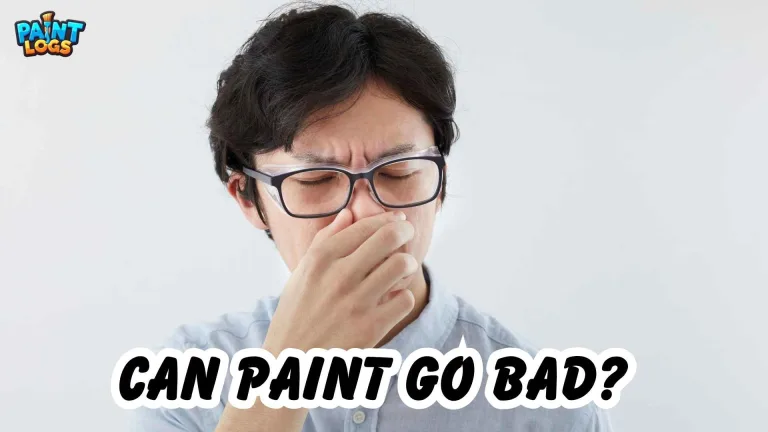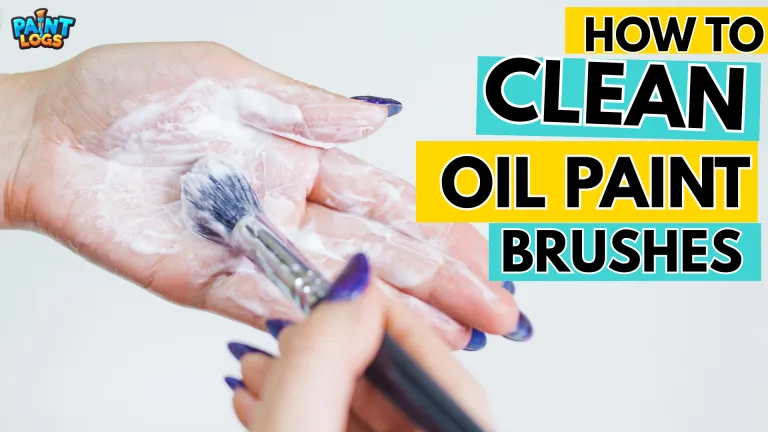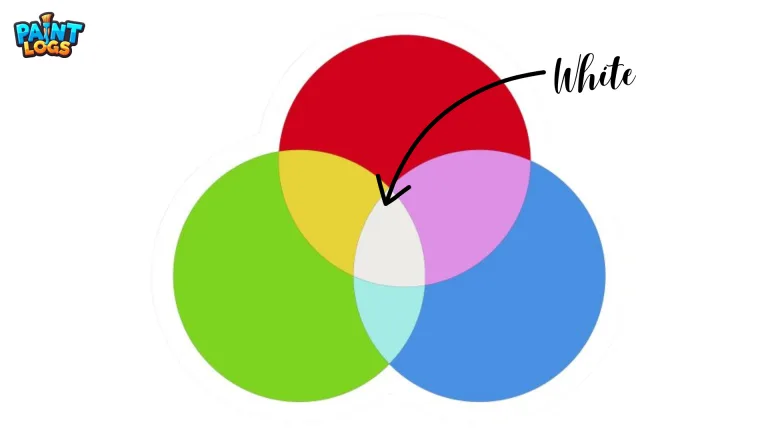Ever wondered why some paints cover your canvas in a single stroke while others need layers to show up and what Is Paint Opacity or Transparency?? That difference comes down to paint opacity—a crucial but often overlooked aspect of painting. Whether you’re working with acrylics, oils, or watercolors, understanding the difference between transparent, opaque, and semi-transparent paints can completely transform the way you mix colors, layer textures, and bring your artwork to life.
In this guide, we’ll break down what paint opacity means, how to read those little square symbols on your paint tubes, and how different opacity levels affect drying time, texture, color blending, and artistic results. Whether you’re a beginner or a seasoned artist, this overview will help you paint with more confidence and control.

What Is Paint Opacity or Transparency?
Opacity refers to a paint’s ability to conceal the surface beneath it. Black paints are often highly opaque, meaning they can fully cover the underlying surface in one coat. However, colors like yellows and reds might need several coats to achieve full coverage. The opacity of a paint is influenced by the composition, including pigments, fillers, and factors like pigment dispersion and the thickness of the paint layer.
You can typically find labels on your paint tubes or bottles indicating the opacity or transparency level of the paint. These symbols are important for understanding how the paint will behave when applied.
What Do the Paint Transparency Symbols Mean?
Have you ever wondered what those small square symbols on paint bottles and tubes represent? They refer to the opacity or transparency of the paint, and there are three main types of symbols:
- Opaque Paints (Solid Square): This symbol indicates that the paint will completely cover the surface below. These paints are perfect for base layers, backgrounds, or any area where you want full coverage. Common opaque colors include Titanium White and Cadmium Red.
- Transparent Paints (Empty Square): An empty square indicates that the paint is transparent and will allow the underlying layers to show through. Transparent paints are excellent for glazing techniques, which involve applying thin layers of paint to build depth and luminosity. They are also useful for tinting other colors without hiding underlying details. Colors like Alizarin Crimson and Phthalo Blue are typically transparent.
- Semi-Transparent Paints (Half-Filled Square): This symbol represents paints that offer a middle ground between opaque and transparent. Semi-transparent paints provide partial coverage while still allowing some of the underlying layers to show through. These paints are versatile, making them great for both layering and providing decent coverage in various techniques.

Are the Paint Transparency Symbols the Same for Both Acrylic and Oil Paints?
Yes, the opacity or transparency symbols – solid square, empty square, and half-filled square – are used in both oil and acrylic paints. These symbols are consistent across different paint types and help artists understand how a paint will behave in terms of layering and coverage on their canvas. While the symbols are usually the same, it’s always good practice to check each brand’s specific chart, as there may be slight variations.
How Does Paint Opacity / Transparency Affect My Painting?
- Impact on Color Mixing: The transparency of the paint can significantly influence how colors mix. Transparent paints allow for more depth and luminosity when mixed, while opaque paints create more solid blends.
- Technique Considerations: The opacity of the paint you choose should align with the techniques you plan to use. For example, transparent paints are ideal for glazing or layering techniques, while opaque paints are great for methods like impasto or covering large areas.
- Influence of Mediums: Adding mediums to your paint can also alter its transparency. For instance, adding a glazing medium to an opaque paint can make it more transparent.
Acrylic/Oil Paint Colors and Their Opacity (Transparency) Ratings
Want to know which colors are opaque, semi-opaque, or transparent? Below is a list of common paint colors and their typical opacity/transparency levels:
Opaque Colors List:
- Titanium White: Highly opaque, perfect for coverage and mixing.
- Cadmium Red: Dense, bright red, known for its strong opacity.
- Cadmium Yellow: A vivid yellow, highly opaque.
- Ultramarine Blue: Typically opaque, great for deep blue coverage.
- Burnt Umber: A dark brown, usually opaque.
- Burnt Sienna: A red-brown, often opaque.
- Oxide of Chromium: An opaque green.
- Cobalt Blue: A bright blue with good opacity.
- Mars Black: A strong, opaque black, often used for shading.
- Cadmium Orange: A bright orange, highly opaque.
- Naples Yellow: A pale yellow, opaque.
- Chrome Green: A vivid green, opaque.
- Venetian Red: A deep red, very opaque.
- Cerulean Blue: A sky blue, opaque.
- Payne’s Grey: A dark blue-grey, opaque.
- Olive Green: A muted green, opaque.
- Yellow Ochre: A warm yellow, opaque.
- Ivory Black: A softer black, opaque.
- Raw Umber: A dark, opaque brown.
- Zinc White: A softer, more transparent white but still somewhat opaque.
- Cadmium Scarlet: A rich, vibrant red with excellent opacity.
- Cadmium Lemon Yellow: A vibrant yellow with strong opacity.
- Cobalt Turquoise: A bright turquoise with solid opacity.
- Manganese Violet: Known for its opacity and deep purple tone.
- Titanium Buff: A warm beige that is opaque and great for underpainting or mixing.
- Ivory Black: A slightly softer black compared to Mars Black but still very opaque.
- Hansa Yellow: Bright yellow with good opacity.
- Cobalt Green: An opaque, vibrant green with a blueish tint.
- Lamp Black: A strong, opaque black with rich, deep tones.
Semi-Opaque to Semi-Transparent Colors List:
- Alizarin Crimson: Typically semi-transparent, offers rich reds.
- Phthalo Blue: Can be transparent or semi-transparent.
- Raw Sienna: A yellowish-brown, semi-opaque.
- Dioxazine Purple: Often semi-transparent.
- Sap Green: Typically semi-opaque.
- Cadmium Green: A bright green, semi-opaque.
- Hooker’s Green: Deep green, usually semi-transparent.
- Permanent Rose: A vibrant pink-red, semi-transparent.
- Indian Red: A dark red, semi-opaque.
- Yellow Lake: A semi-transparent yellow.
- Cobalt Violet: Soft violet, semi-transparent.
- Lemon Yellow: A bright yellow, semi-opaque.
- Turquoise Blue: A vibrant blue, semi-transparent.
- Manganese Blue Hue: Bright blue, semi-transparent.
- Quinacridone Gold: A rich gold, semi-transparent.
- Cadmium Orange: A bright, vivid orange, usually semi-opaque.
- Cadmium Green Deep: A dark, rich green, semi-transparent to semi-opaque.
- Indian Yellow: A warm yellow, semi-transparent in nature.
- Transparent Yellow Oxide: A warm, earth-tone yellow, semi-opaque.
- Violet Quinacridone: A semi-transparent, rich purple hue.
- Benzimidazolone Orange: A semi-opaque orange that is vibrant and works well in mixing.
- Alizarin Permanent: A deep, semi-transparent red.
- Phthalo Turquoise: A vibrant, deep turquoise, semi-transparent.
Transparent Colors List:
- Quinacridone Magenta: Known for its transparency and vibrant hue.
- Viridian: A bright green, typically transparent.
- Prussian Blue: A deep blue, transparent.
- Nickel Azo Yellow: A bright, transparent yellow.
- Indanthrone Blue: A dark blue, transparent with a rich tone.
- Pthalo Blue (Green Shade): Transparent, vibrant blue with deep undertones.
- Phthalo Green (Yellow Shade): A transparent, bright green.
- Cadmium Red Deep: A deep red with transparent qualities.
- Winsor Yellow: Transparent yellow with a fresh, bright tone.
- Magenta Quinacridone: A bright, transparent magenta, great for layering.
- Madder Lake: A transparent, deep red ideal for glazing.
- Hansa Yellow Medium: Transparent yellow, excellent for tinting.
- Cobalt Violet Deep: Transparent with a vibrant violet tone, excellent for glazing.
- Indian Yellow: A transparent yellow.
- Rose Madder Genuine: A transparent red.
- Phthalo Green: A vibrant green, transparent.
- Transparent Red Iron Oxide: A transparent red.
- Ultramarine Violet: A transparent violet.
- Permanent Alizarin Crimson: A transparent red.
- Permanent Orange: A transparent orange.
- Quinacridone Red: A vibrant, transparent red.
- Winsor Blue: A clear blue, transparent.
- Permanent Yellow Deep: A rich, transparent yellow.
- Phthalo Turquoise: A transparent blue-green.
- Transparent Earth Orange: A transparent orange-brown.

Best Color Combinations: Using Transparent and Semi-Transparent Paints
Here are 21 examples of color combinations using transparent or semi-transparent paints, showing the different effects achieved when layered over various underlying colors:
- Transparent Red (Alizarin Crimson) over Dark Brown: Creates a rich burgundy.
- Transparent Red over Bright Yellow: Results in a warm orange.
- Semi-Transparent Blue (Ultramarine) over Grey: Creates a cool blue tone.
- Transparent Yellow (Arylide Yellow) over White: Produces a bright yellow.
- Transparent Yellow over Dark Green: Turns into a greenish-olive tone.
- Semi-Transparent Purple (Dioxazine Purple) over Black: Yields a deep purple sheen.
- Semi-Transparent Purple over Light Pink: Creates a soft lavender.
- Transparent Green (Phthalo Green) over Blue: Forms a deep turquoise.
- Transparent Green over Burnt Sienna: Creates a warm earthy green.
- Transparent Orange over White: Yields a bright orange.
- Transparent Orange over Light Blue: Results in a soft greenish-gray.
- Semi-Transparent Magenta (Quinacridone Magenta) over Yellow: Creates a red-orange.
- Semi-Transparent Magenta over Dark Blue: Forms a cool purple.
- Transparent Burnt Umber over Ultramarine Blue: Creates a cool brown.
- Semi-Transparent Raw Sienna over Black: Yields a warm brown.
- Transparent Phthalo Blue over Light Green: Forms a vibrant green.
- Transparent Viridian Green over Cadmium Red: Creates a muted brown.
- Semi-Transparent Cobalt Blue over Bright Orange: Creates a greyish-blue.
- Transparent Quinacridone Gold over Dark Purple: Results in a warm brown.
- Semi-Transparent Venetian Red over Olive Green: Forms a rustic brown.
- Transparent Prussian Blue over Bright Yellow: Creates a vivid green.
These interactions vary depending on the surface texture and reflectiveness beneath, offering numerous opportunities for creative exploration.

The Effect of Paint Opacity on Surface Texture:
Discuss how opacity affects texture, particularly in techniques like impasto (thick layers of paint) versus smooth, layered effects that require transparent paints. For example, transparent colors allow the texture of the canvas or previous layers to show through, while opaque paints cover the surface completely.
Glossy vs. Matte Finishes and Their Relation to Opacity:
- Glossy Finishes: Explain that glossy paints, regardless of their opacity, often give a richer appearance with more depth. Transparent glossy paints can create luminous layers, whereas opaque glossy paints create a solid, vibrant appearance.
- Matte Finishes: Conversely, matte paints tend to have a more muted appearance. Transparent matte paints allow underlying layers to softly show through, while opaque matte paints create a velvety finish without reflecting light.
How Opacity Affects Drying Time:
- Opacity and Drying Time: Explain that thicker, opaque layers generally take longer to dry than thin, transparent layers due to the amount of pigment and binder used in the paint. This could impact the workflow of artists, particularly those using glazing or layering techniques.
The Role of Opacity in Acrylics vs. Oil Paints:
- Acrylics: Acrylic paints generally have higher opacity due to their polymer structure. They dry faster and provide a matte finish, but their opacity can vary depending on the brand and pigment used.
- Oils: Oil paints tend to have a more variable opacity, especially when thinned with solvents. This allows for smooth transitions and layering, ideal for creating depth, but may require longer drying times.
Factors That Influence Paint Opacity:
- Pigment Type: Different pigments have inherent opacity levels. For example, titanium white is opaque, while certain earth tones like raw umber are semi-transparent. The purity and particle size of pigments impact the opacity of the paint.
- Binder and Mediums: The type of binder (acrylic polymer, oil, etc.) and additional mediums (glazing medium, retarders, etc.) can impact how transparent or opaque the paint becomes. Discussing these factors gives readers a deeper understanding of how to control opacity based on their preferences.
Opacity and Lightfastness:
- Lightfastness: Explain how opacity can also influence the longevity and lightfastness of a painting. Opaque colors tend to be more stable and resistant to fading, while transparent colors, being thinner, might require more care in terms of exposure to light over time.
Using Transparent and Opaque Paints Together:
- Layering Techniques: Provide advice on how to layer transparent and opaque paints effectively. For example, starting with an opaque underpainting and then glazing with transparent colors can create a sense of depth and richness in the painting.
- Creating Visual Effects: Transparent colors are often used in portraits or to add depth to landscapes, while opaque colors are used for details and to make specific elements stand out, such as highlights or key features in a subject.

How to Test Paint Opacity at Home:
- Opacity Test: Offer readers a simple guide for testing opacity at home. For example, apply a thin layer of paint on a white surface and a black surface, and observe how much of the underlying color shows through. This will help them assess how transparent or opaque a paint is in practice.
Common Issues with Opacity in Paint:
- Uneven Coverage: Sometimes, even highly opaque paints may still appear patchy when applied to certain surfaces or over certain colors. Discuss how different surfaces (e.g., canvas, wood, paper) may affect the appearance of opacity.
- Fixing Transparency Problems: Offer tips for when the paint isn’t covering as expected, such as applying more layers, using a heavier pigment load, or switching to a more opaque color if needed.
Popular Transparent and Opaque Colors in Different Painting Styles:
- Watercolor Painting: Watercolors naturally use transparent paint to create delicate washes and subtle color blending.
- Oil Painting: Discuss how oil painters often use transparent glazes to add depth and dimension to their work.
- Acrylic Painting: Acrylics, being versatile, can be used both for opaque impasto techniques and transparent glazes depending on the desired effect.
Factors That Affect the Opacity of Paint in Different Lighting Conditions:
- Lighting Effects: Paint opacity can appear different under various lighting conditions. For example, in dim lighting, transparent paints may appear more vibrant, while opaque paints may seem more muted. It’s important for artists to consider how their artwork will look in different environments.
Comparing Different Brands for Opacity and Transparency:
- Brand Comparisons: Include specific examples from popular paint brands and how their opacity ratings compare. Some brands may have more consistent results for opacity, while others may vary by color or medium. For example, Winsor & Newton, Golden, or Liquitex often have charts showing the transparency and opacity levels of their colors.
How to Achieve a Balanced Mix of Transparency and Opaqueness:
- Balanced Mix: Offer advice on achieving a balanced approach when using both transparent and opaque paints. For instance, mixing transparent and opaque paints together can yield stunning results, creating a layering effect where transparency allows for depth and opaque colors provide structure.
FAQ
How Do I Know Exactly How Transparent the Paint Is?
While the symbol on the label provides a general guide, it’s helpful to test the paint on a palette or scrap surface to see its actual transparency or opacity. This is because the true effect of the paint can be influenced by the thickness of the application and the color beneath it.
For My First Set of Paints, Which Opacity / Transparency Is Best?
As a beginner, it’s recommended to start with a mix of opaque, transparent, and semi-transparent paints. This combination will allow you to experiment with various techniques and understand how layering and coverage work. Over time, you’ll find which opacity levels suit your personal style and the subjects you enjoy painting.
Will Several Layers of Transparent Paint Make It Opaque?
Yes, applying multiple layers of transparent paint can build up to a more opaque appearance. This technique, known as glazing, involves layering thin coats of transparent paint, with each layer drying before the next is applied. While this can increase opacity, the result may still not be as solid as using an inherently opaque paint. The outcome will also depend on the pigment’s characteristics and the thickness of each layer.
What Happens When You Add Transparent or Semi-Transparent Paint Layer Over Different Underlying Colors?

The interaction between transparent or semi-transparent paints and the layers beneath them can create varied effects. For example, applying a transparent red like Alizarin Crimson over a dark base might create a deep burgundy, while applying it over a light yellow base might give a vibrant orange. These interactions depend on both the paint’s transparency and the underlying color, offering endless possibilities for experimentation.







